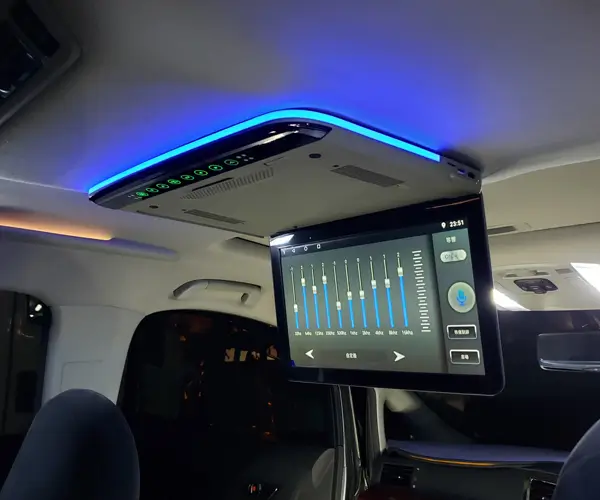Certainly! Here is the first part of a compelling, SEO-friendly article centered on the "SG90 micro servo." The tone is inviting, informative, and designed to captivate readers interested in electronics, robotics, or DIY projects.

Unleashing Creativity with the SG90 Micro Servo: Your Gateway to Compact Robotics and Projects
In the expansive universe of robotics and electronics, few components have earned as much admiration for their simplicity and versatility as the SG90 micro servo. Tiny but mighty, this little motor has revolutionized DIY projects, educational kits, and even professional prototype development, proving that size isn't everything—it's performance and adaptability that count.
What is the SG90 Micro Servo?
At its core, the SG90 is a small, lightweight, and inexpensive servo motor capable of precise angular movement. Servo motors like the SG90 are fundamentally different from regular DC motors—they include a built-in control circuit and feedback mechanism that allows for accurate position control. This means you can tell it to move to a specific angle, and it will do so reliably.
The SG90 micro servo is characterized by its compact size—about 23mm x 12mm x 29mm—and its weight of approximately 9 grams, making it ideal for projects where space and weight are critical factors. Despite its tiny stature, it operates on a voltage of 4.8V to 6V, delivering a stall torque up to 1.8 kg·cm under ideal conditions—impressive figures for its size.
Understanding Its Features and Components
What makes the SG90 so popular among hobbyists and prodigies alike? Let's delve into its core features:
Compact Size: Its diminutive form factor allows integration into tight spaces—think small robots, drones, or animatronics.
Lightweight: Weighing just about 9 grams, it’s perfect for projects where excess weight could compromise performance.
Good Precision: With a standard angular range of about 0° to 180°, though some variants may offer a slightly narrower or broader span, it provides smooth and accurate movement.
Ease of Control: It uses PWM (Pulse Width Modulation) signals for position control, compatible with microcontrollers like Arduino, Raspberry Pi, and others.
Affordable and Accessible: Its low price makes it accessible to beginners, schools, and up-and-coming tech creators.
How Does the SG90 Work?
The operation of this servo involves a simple yet elegant interplay of electronics and mechanics. When you send a PWM signal from a microcontroller, the servo's internal control circuit interprets this signal to determine the position at which the servo's motor should hold. The motor then turns the servo horn (the output arm), which can be connected to various mechanical links, levers, or direct loads.
Inside, the servo contains a small DC motor, a potentiometer for feedback, a gear train (often plastic), and control circuitry. The potentiometer acts as a position sensor; as the motor turns, the feedback mechanism tells the control circuit how far the motor has moved. The circuit then adjusts the PWM signal to maintain or reposition the servo at the desired angle.
Why is the SG90 a Favorite for Hobbyists?
Its affordability combined with ease of use makes it a favorite component to experiment with. You can learn about servo control, integrate it into small robotics, or even animate models and figures. This component's ubiquity in the maker community also means abundant tutorials, code snippets, and trouble-shooting guides at your fingertips.
Best Applications of the SG90 Micro Servo
The versatility of the SG90 allows it to be employed across an array of applications. Some of the most common projects include:
Robotics: Making robotic arms, grippers, or mobile robots that require precise joint movements.
Drones and RC Vehicles: For controlling flaps, camera gimbals, or other movable parts.
Automated Models: Such as animatronic figures, kinetic sculptures, or moving displays.
Educational Projects: Teaching students about electronics, control systems, and programming.
Smart Home Devices: For opening vents, controlling blinds, or other small automation tasks.
Getting Started With the SG90
Setting up the SG90 is straightforward. You'll need a compatible microcontroller—most commonly Arduino—for PWM control. Connect the servo's power (typically red wire) to a 5V supply, ground (black or brown wire) to GND, and the control signal (yellow or orange wire) to a PWM-capable digital pin.
Once wired, you can begin sending position commands via code, gradually learning to fine-tune the movement and understand the servo's response. Many tutorials and open-source codebases make the journey smoother, transforming the potential of this tiny motor into a powerful learning experience.
Potential Challenges and Solutions
While the SG90 boasts many advantages, it's not without limitations. The plastic gear train, although lightweight, can be prone to wear and breakage under high loads or rapid movements. Excessive torque or prolonged stall conditions can cause overheating or motor damage.
To circumvent these issues:
Avoid overloading the servo beyond its rated torque.
Limit continuous spinning or hold positions for extended periods under heavy loads.
Use power supply decoupling for stability.
Consider upgrading to metal gear servos if your project demands higher durability.
In Summary
The SG90 micro servo embodies the perfect blend of simplicity, affordability, and functionality. Its tiny profile and easy integration make it an indispensable tool in the array of components available to creators and engineers. Whether you're building a small robot, an educational demonstration, or exploring automation, it opens doors to endless creative possibilities—all packed into a remarkably small package.
Leveraging innovations in modular drive technology, Kpower integrates high-performance motors, precision reducers, and multi-protocol control systems to provide efficient and customized smart drive system solutions.




































